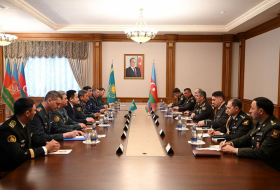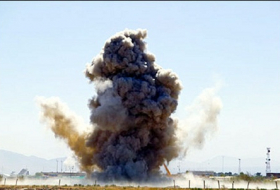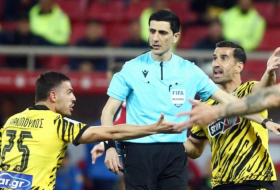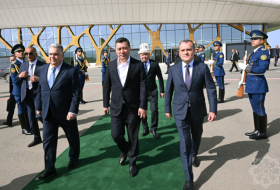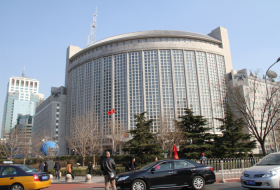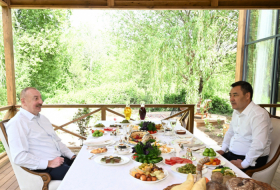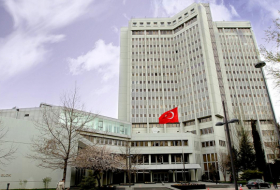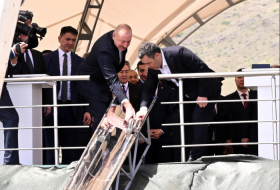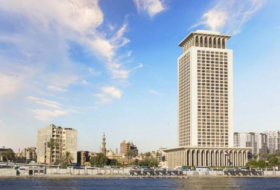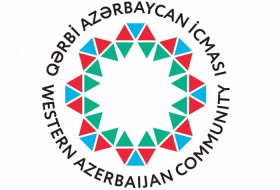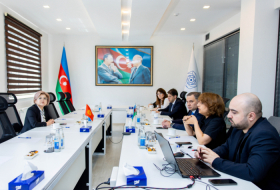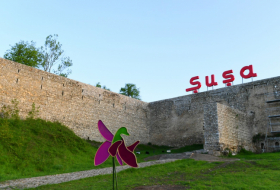Thanks to the Internet, we know of massacres that we might not have heard about five or ten years ago.
Here are some examples: November 2017 — gunmen entered Egypt’s al Rawdah Sufi Mosque and machine-gunned over 300 worshipers including 128 women and 27 children, CNN reported . According to Wall Street Journal , the same year in 2017, 358 men, women and children were killed in Chut Pyin — a Mynamar village by Mynamar troops. The Independent reported in September 2017 that Mynamar soldiers loyal to the country’s prime minister Aung San Suu Kyi — a Nobel Peace Prize awardee — killed more than 400 Rohingya Muslims.
The Internet leads us to these mass murders almost instantly. That wasn’t the case a quarter century ago.
On the night of February 26, 1992, Armenian troops, supported by remnants of the old Soviet 366th Motorized Infantry Regiment, attacked the Azerbaijani mountain town of Khojaly in Azerbaijan’s Nagorno-Karabakh region. The 3000 people of this completely besieged town were defended by a hundred police and volunteer teen-aged students.
Rockets and artillery shells bombarded the town. Nightly barrages had occurred for the five months since Armenian forces had cut roads to the rest of Azerbaijan; no vehicles could enter or leave Khojaly. Supplies were helicoptered in, people out; the flights ended on the 14th. Food was scarce.
The bombardment drove Khojaly residents into basement shelters. When it ended, Armenian soldiers attacked. Defenders knew they couldn’t hold against tanks, so they told all civilians to flee Khojaly eastward to safety towards Azerbaijani-held city of Aghdam.
Groups of men, women and children started downhill through snow-covered hills in freezing temperatures. With only the clothes they wore, they tripped and stumbled towards safety through the night. Their elderly slowed everyone.
Armenia claims to this day that the people of Khojaly were warned to evacuate through a “safe corridor” down the mountains. They say they promised safe passage. Between midnight and dawn, 613 Azerbaijani men , women and children were slaughtered by machine guns, rifles, knives and bayonets in that “safe corridor.” The attack killed 106 women, 63 children and 70 elderly people.
Some 487 people, including 76 children, were critically wounded, while 150 of 1,275 Azerbaijanis whom the Armenians captured during the massacre remain missing to date. Eight families were completely wiped out, 130 children lost their fathers, and some 25 children became orphans in the massacre. According to the investigations, Armenian forces tortured the captives by burning them alive, peeling off their scalps, beheading them, cutting off ears, noses or sexual organs, and removing the eyes, alongside mass killings.
Within hours of the massacre, American reporter Thomas Goltz made his way by helicopter to the killing fields. He is the only American reporter who visited Khojaly before the attack. He personally knew people whose bodies he saw after the massacre, and wrote a story for the Washington Post which he dictated over the phone from Aghdam by way of the Post’s Moscow bureau. The story was published February 27, 1992 in the Post, with another article in London’s Sunday Times. The New York Times ran a story about the massacre on March 2 that described gruesome details of the massacre including decapitated and scalped bodies and children “with the backs of their heads blown off.” Time Magazine ran a story on Khojaly on March 16, 1992.
Despite some coverage by the Washington Post (2 articles), the New York Times (1), The Sunday Times (1) and Time Magazine (1), few people in the United States knew anything about the massacre at Khojaly, which by definition of the 1948 Convention of Genocide was a genocidal act — and a crime against humanity.
Thomas Goltz described the massacre in his book “Azerbaijan Diary”. This book has been validated by another book, “Black Garden” written by prominent British expert Tom De Waal.
Markar Melkonian, the brother of the California-born and educated Armenian terrorist, Monte Melkonian, wrote a book titled “My Brother’s Road: An American’s Fateful Journey to Armenia.”
In it, Melkonian specifies two Armenian military detachments — ARABO and ARAMO. Describing the genocidal massacre of Azerbaijani civilians by Armenian forces at Khojaly, Melkonian writes (page 213): “ The Arabo fighters had then unsheathed the knives they had carried on their hips for so long, and began stabbing. Now, the only sound was the wind whistling through dry grass, a wind that was too early yet to blow away the stench of corpses… Monte crunched over the grass where women and girls lay scattered like broken dolls .”
A better view is that of former Armenian President Serzh Sargsyan in Tom De Wall’s “Black Garden” (page 172). Sargsyan was in charge of Armenian forces in Karabakh, which committed the Khojaly Massacre. This is what President Sargsyan said to De Waal:
“Before Khojaly, the Azerbaijanis thought they were joking with us, they thought that Armenians were people who could not raise their hand against the civilian population. We were able to break that stereotype. And that’s what happened.”
The Human Rights Watch, which called Khojaly “the largest massacre in the conflict,” invalidated Armenia’s attempts to deny its responsibility for Khojaly, and blamed the Armenian forces for the massacre. It said:
“…Yet we place direct responsibility for the civilian deaths with Karabakh Armenian forces…The circumstances surrounding the attack . . .on those fleeing Khojaly indicate that [Karabakh] Armenian forces and the troops of the 366th CIS regiment . . .deliberately disregarded this customary law restraint on attacks.”
No one has ever been punished for this mass murder of Azerbaijanis. Many of the perpetrators of Khojaly are even hailed as national heroes in Armenia, rewarded over the years with high ranking positions in the government, even the presidency.
I interviewed several survivors of the Khojaly Massacre. I also wrote a book about this horrific crime titled “Murder in the Mountains”.
On the night of February 26, 1992, a war crime and a crime against humanity was committed at Khojaly, Azerbaijan, in which over 600 men, women and children were brutally killed; hundreds are still missing. Thanks to the Internet, America knows it now.
The author is a well-known journalist based in San Diego, California, US.
Medium.com
More about: Khojaly-genocide











